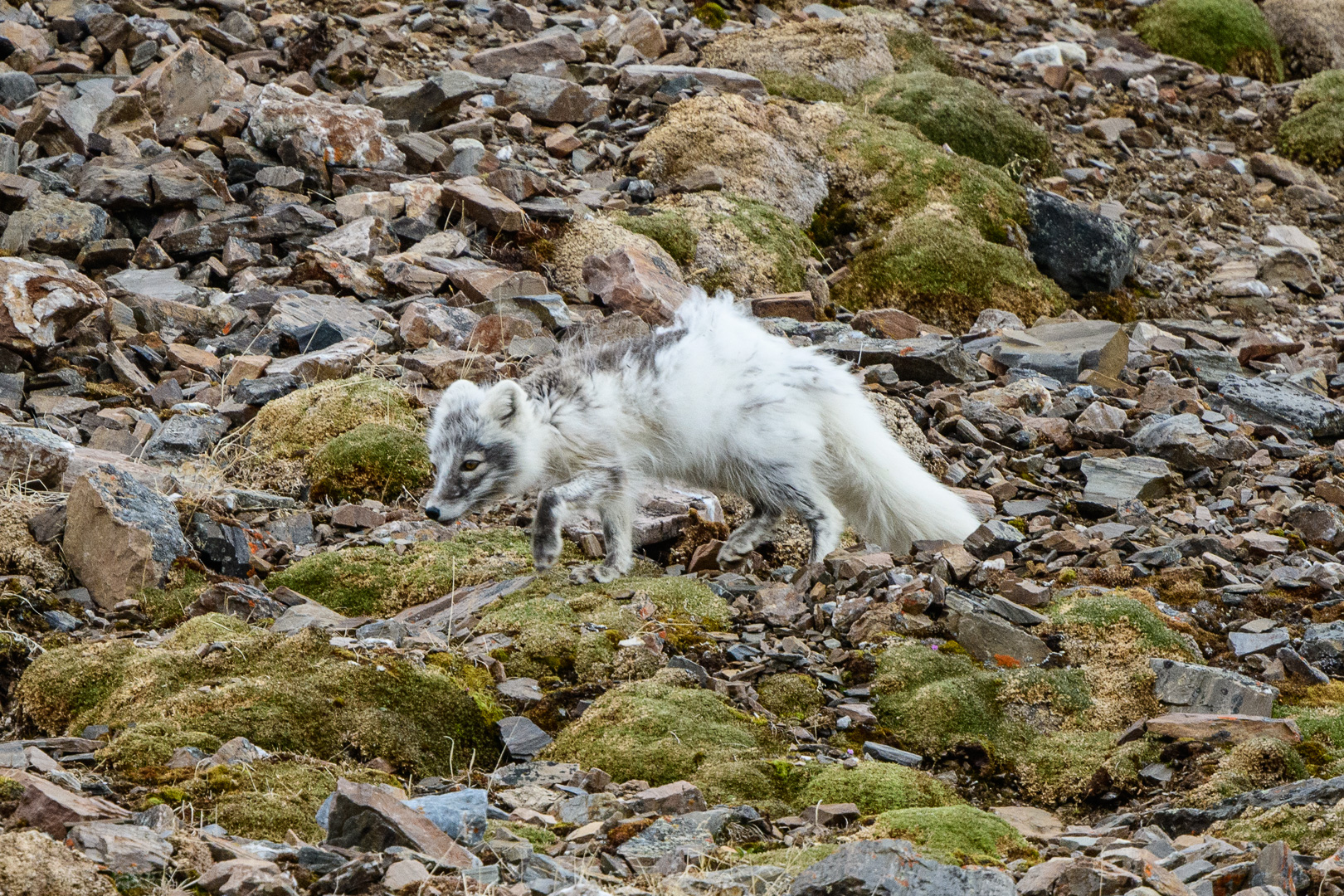
3rd.June: Fjortende Julibukta
Date: 03.06.2023
Position: 79°02.3’N / 011°07.9’E
Wind: Calm
Weather: Overcast
Air Temperature: +2
Another beautiful day in Svalbard, we made the most of the morning, with a split landing. Spending time onshore hiking across the tundra, seeing the wild flora starting to emerge, with some beautiful purple saxifrage. High up on the cliff face we observed kittiwakes in flight, and heard their loud calls. On the ground we were lucky enough to spot a few arctic foxes, even a brief chase was observed with one of the foxes still having half of its white winter coat. Very high up on rocks a few Svalbard reindeer could be seen grazing.
During the zodiac cruise, the Fjortende Julibukta glacier could be enjoyed from the water, together with lots kittiwakes resting on the smaller ice floes. Cruising along the shoreline it was possible to see numerous Brünnich’s guillemots nesting together, barnacle geese and a number of puffins too.
The Arctic fox (Vulpes lagopus), also known as the white fox, polar fox, or snow fox, is a small fox that belongs to the family of Canidae, native to the Arctic regions of the Northern Hemisphere and common throughout the Arctic tundra biome. It is well adapted to living in cold environments, and is best known for its thick, warm fur that is also used as camouflage. It has a large and very fluffy tail. Its body length ranges from 46 to 68 cm, with a generally rounded body shape to minimize the escape of body heat. The Arctic fox preys on many small creatures such as lemmings, voles, ringed seal pups, fish, waterfowl, and seabirds. It also eats carrion, berries, seaweed, and insects and other small invertebrates. Arctic foxes form monogamous pairs during the breeding season and they stay together to raise their young in complex underground dens.

















